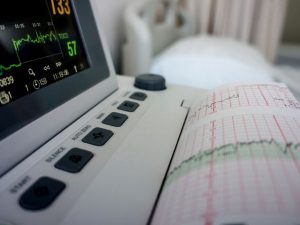What is Going On?
The physician performed a bedside ultrasound confirming placental detachment in-utero, known as placental abruption. A diagnosis of placental abruption is considered an obstetrical emergency because it can lead to both maternal morbidity and neonatal morbidity. Maternal complications can include renal failure, hemorrhage, hysterectomy, DIC, hypovolemic shock, and death.
Fetal complications can include non-reassuring status, growth restrictions, and death. Patients with a placental abruption can present with nonreasoning fetal heart rate patterns, uterine tenderness, tach systole, abdominal pain, a rigid abdomen, back pain, and vaginal bleeding. It is important to note that some of the clinical findings will differ between patients in severity and presence.
The back and abdominal pain experienced may change based on the location of the placenta. Whereas, vaginal bleeding may range from severe (if an artery was compromised in the separation) to minimal amounts of bleeding. Patients may even present with no bleeding if blood is trapped in the uterus and not being expelled.
Placental abruption has a higher likelihood to occur in future pregnancies or with a family history of abruption. There are self-induced risk factors for placenta abruption, which can include smoking and cocaine use. Additional medical and pregnancy related risk factors include hypertension, congenial uterine anomalies, fetal congenital anomalies, and abdominal trauma.








